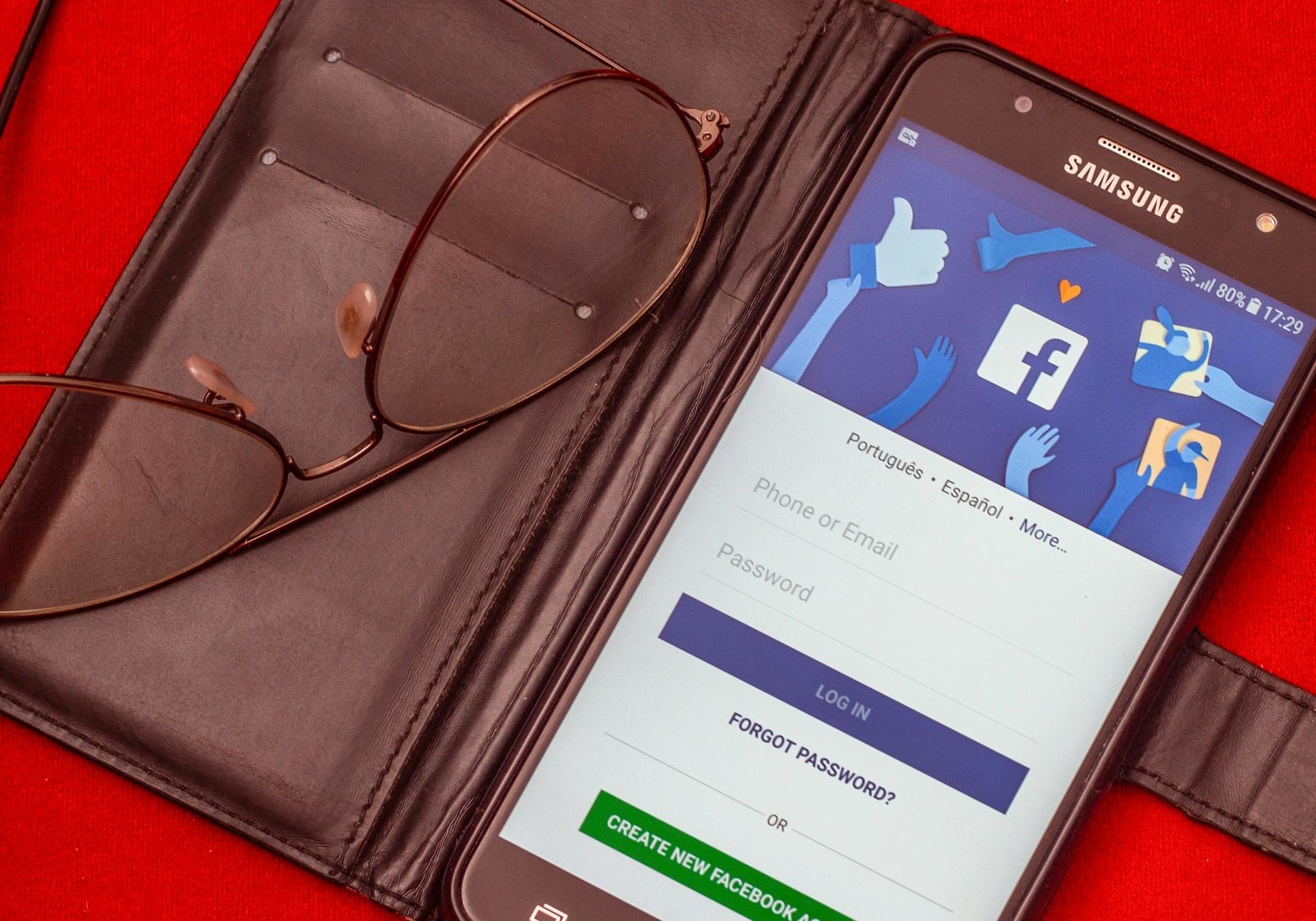
To open a Treasury Direct account, you'll need to create a Treasury Direct account online through their website. You can do this by going to the Treasury Direct website and clicking on the "Open an Account" button.
The Treasury Direct account authorization process requires you to provide some basic personal and financial information. This includes your name, address, date of birth, and Social Security number.
You'll also need to create a username and password to access your account securely. This will be your unique identifier to log in and manage your account.
Once you've completed the online application, you'll receive a confirmation email with a link to verify your email address.
Account Setup
To set up your TreasuryDirect account, you'll need to complete four sections: Account Owner Information, Contact Information, Bank Information, and Submission.
You'll need to provide your first name as shown in the Account Owner Information section, as this will be used to personalize your account name if you leave the 'Give Your Account a Name' field blank.
In the Bank Information section, it's a good idea to abbreviate or condense the Bank Name and Name(s) on the Account, as Automated Clearinghouse (ACH) rules limit the amount of space available.
To certify your application, you'll need to confirm that you've provided your correct taxpayer identification number, are not subject to backup withholding, and are a U.S. person.
Here are the key requirements for being a U.S. person:
- Must be a U.S. citizen, resident, or individual who is at least 18 years old with a valid U.S. Social Security Number.
- Must have a U.S. address of record.
- Must have an account at a U.S. depository financial institution that will accept debits and credits using the Automated Clearing House method of payment.
Account Application
To set up a TreasuryDirect account, you'll need to complete the online application, which includes several sections. The application is divided into four main sections: Account Owner Information, Contact Information, Bank Information, and Submission.
The Account Owner Information section requires you to provide your first and last name, as well as your Social Security Number. If you leave the "Give Your Account a Name" field blank, the account name will be personalized based on your first name.
You'll also need to provide Contact Information, including your phone number and email address. This information will be used to contact you about your account.

In the Bank Information section, you can abbreviate or condense the Bank Name and Name(s) on the Account, as Automated Clearinghouse (ACH) rules limit the amount of space available.
The Submission section requires you to certify that you've provided your correct taxpayer identification number, are not subject to backup withholding, and are a U.S. person. You must also certify that you're 18 years old or older with a valid U.S. Social Security Number and a U.S. address of record.
Here are the requirements for the Submission section:
If you're establishing an account on behalf of an entity, you'll need to provide a last name and first name for each individual included in the registration of the security. You'll also need to certify that you're authorized to open and access an account for the entity and have the authority to act alone on behalf of the entity.
Section 363.10 What is an Account?
An account is a collection of data that stores information about a customer or user.
In accounting, an account is a specific record of financial transactions, such as income and expenses.
Authorization and Verification
To activate a TreasuryDirect account, you'll need to fill out the Treasury Direct Account Authorization Form, denoted as FS Form 5444. This form is regulated by the Office of Management and Budget (OMB No. 1530-0071) and serves as a crucial step for account validation.
The form must be signed in the presence of an authorized certifying officer, who is typically found at financial institutions across the United States. Notaries are not acceptable for this purpose.
Here's a summary of the required information:
Note that the form is not fillable, and you'll need to print it out and fill it in by hand. The average time to fill out the form is 30 seconds.
Account Authorization Form PDF Details
The Treasury Direct Account Authorization Form is a crucial document for activating and managing TreasuryDirect accounts. It's regulated by the Office of Management and Budget (OMB No. 1530-0071) and requires applicants to accurately complete the form with ink or typewritten entries.
The form is 2 pages long and has no fillable fields. It takes an average of 30 seconds to fill out. Applicants must sign the form in the presence of an authorized certifying officer, who is available at financial institutions across the United States.
Here are some key details about the form:
The form includes a notice under the Privacy and Paperwork Reduction Acts, affirming the confidentiality of the information provided and its limited disclosure strictly regulated by law. This procedure not only facilitates the efficient processing and management of TreasuryDirect accounts but also safeguards the integrity of the financial transactions and information of the parties involved.
Applicants must sign the form in the presence of an authorized certifying officer, who is available at financial institutions across the United States. Certification by a notary isn't acceptable.
User Guide 013A
User Guide 013A is a crucial section in the authorization and verification process. It's where you can request the purchase of an EE or I Bond for your account.
You can buy up to $10,000 of each savings bond security type per person per calendar year. This is a significant limit, and it's essential to keep track of your purchases to avoid exceeding this amount.
The purchase form is divided into three sections, but the specifics of these sections aren't detailed in the provided text. However, you do have the option to click "Submit" to review your purchase or "Cancel" to discontinue the request.
Here are your options when it comes to submitting or canceling your purchase request:
- Click "Submit" to review your purchase.
- Click "Cancel" to discontinue this purchase request.
Verification
Verification is a crucial step in the process of accessing your TreasuryDirect account. You'll need to verify your identity to ensure that you're the rightful owner of the account.
To start the verification process, you'll need to enter your Taxpayer Identification Number (TIN) after your TreasuryDirect account number is filled in automatically. This is a required step before you can proceed to answer security questions.

You can click "Continue" to move forward with the verification process or "Cancel" to exit TreasuryDirect altogether.
Verification methods may vary depending on your individual circumstances. If you're an entity account manager, you'll need to provide information about yourself on the online application, which may be used to verify your identity through a third-party service.
Offline verification may also be required at our option. In some cases, we may request additional evidence to verify your identity.
If you're opening a TreasuryDirect account on behalf of an entity, you'll need to establish an account online and provide required information about yourself as the entity account manager. We'll verify your identity and send your account number to you via email once your application is approved.
You'll also need to certify that you're authorized to open and access an account for the entity and have the authority to act alone on its behalf.
Who Has the Right to Conduct Online Transactions in Book-Entry Securities?

An attorney-in-fact can conduct online transactions in your TreasuryDirect account if they provide a copy of a durable power of attorney granting them the authority to do so.
To do so, they must send a written copy of the power of attorney to the address provided in the Treasury Department's regulations.
If the power of attorney is limited, the attorney-in-fact can only conduct transactions they are permitted to by their power, and must do so through an offline process.
If the Treasury Department receives notice that the owner of the account has become incompetent, they will suspend all transactions until they establish the authority of another person to act on their behalf.
The Treasury Department may require additional evidence to support the power of attorney, and will verify the authority before allowing transactions to proceed.
Eligibility and Purchasing
To open a TreasuryDirect account, you must be an individual or an entity with a valid social security number, be 18 years of age or over, and be legally competent.
An entity must have a valid social security number or employer identification number, and the account owner must have a United States address of record and an account at a United States depository financial institution.
You must provide a valid taxpayer identification number for each person named in the registration of the security.
Only an individual TreasuryDirect account owner may purchase a payroll zero-percent certificate of indebtedness, and only through their primary account, and only through the payroll savings plan.
Who Is Eligible to Open an Account?
To open a TreasuryDirect account, you must be an individual or an entity, and have a valid social security number or employer identification number. You must also be at least 18 years old and legally competent.
An entity must have a valid social security number or employer identification number to open a TreasuryDirect account. This ensures that the account is properly registered and can receive payments.

You'll need to provide a valid taxpayer identification number for each person named in the registration of the security. This is an important step in setting up your account.
A United States address of record is required to open a TreasuryDirect account, as well as an account at a United States depository financial institution that accepts debits and credits using the Automated Clearing House method of payment. This ensures that your account can receive and send funds securely.
In the event of an erroneous ACH credit entry, the financial institution will be responsible for correcting the error and reimbursing Treasury for any losses incurred.
Eligible Purchasers of Book-Entry Securities
You can purchase and hold book-entry securities in TreasuryDirect through your account, but a legally incompetent person cannot open an account or buy securities without a court order.
A primary owner can have a secondary owner, and both can manage the account together. They can also make decisions on their own, but it's good to have a co-owner for added support.

You can also purchase securities on behalf of a minor, but the zero-percent certificate of indebtedness is the property of the minor, not the custodian.
The estate of a decedent can purchase securities, but only if a court has appointed a legal representative to act on behalf of the estate. This representative must have the authority to act alone with regard to the account.
You can register the estate of a decedent as "John Doe, Legal Representative of the Estate of William Jones, a decedent, EIN 12-3456789, or SSN 123-45-6789."
Eligible Purchasers of Payroll Zero-Percent Certificate
To purchase a payroll zero-percent certificate of indebtedness, you must be an individual TreasuryDirect account owner. Only individuals can buy these certificates, and they must do so through their primary account.
You can only purchase a payroll zero-percent certificate of indebtedness through the payroll savings plan. This is the only way to buy these certificates.
Account Management
Managing your Treasury Direct account is essential for receiving your bond interest payments and staying on top of your investments. You can manage your account online or by phone.
To access your account online, you'll need to create a Treasury Direct account, which is free and secure. This account will allow you to track your bond holdings, view your payment history, and make changes to your account settings.
If you need help managing your account, you can contact Treasury Direct's customer service team, which is available 24/7 to assist you with any questions or concerns you may have.
How to Edit Treasury Direct Account Form Online
Editing the Treasury Direct Account Form online is a breeze, thanks to the advanced PDF editor that's available for free. Simply hit the "Get Form Button" above on this page to open the editor, where you'll find all the necessary tools to work with your file.
You'll need to fill in specific information, including the page with blank fields for Signature and Title of Certifying, Name of Financial Institution, Address, City State ZIP code, and more. Don't forget to double-check the Department of the Treasury Bureau section to avoid errors.
To fill out the form, start by entering the required information in the Account Owner Information, Contact Information, Bank Information, and Submission sections. Asterisks denote required fields, so make sure to complete them all.
If you leave the 'Give Your Account a Name' field blank, the account name will be personalized based on your first name as shown in Account Owner Information. You can edit this information at any time using the Account Info tab.
In the Bank Information section, abbreviate or condense the Bank Name and Name(s) on the Account, as Automated Clearinghouse (ACH) rules limit the amount of space available.
Here's a quick rundown of the Submission section:
After establishing a TreasuryDirect Primary account, you can create Linked accounts - Minor, Custom, and Conversion accounts. Holdings for each Linked account are kept separately and can be accessed only through your Primary account.
Once you've completed the form, proofread your entries, and then hit "Done" to submit your application. You'll be able to download the form or send it via email, and the PDF form will also be accessible via your personal cabinet with all your adjustments.
How Are Payments Made?
Payments of principal and interest can be made through the ACH method to your account at a financial institution.
You have the flexibility to choose different payment destinations for principal and interest for a marketable Treasury security.
You can change your payment destination at any time, unless the security is in the closed book period.
If we are unable to deliver a payment, we will use the payment to purchase a zero-percent certificate of indebtedness in your TreasuryDirect account.
Savings Bonds and Conversion
If you have Series E, Series EE, or Series I savings bonds issued in denominations of $25 or greater, you're eligible to convert them to book-entry bonds in TreasuryDirect.
To be eligible for conversion, your savings bonds must be one of these three series, and the denomination must be $25 or more.
What Definitive Savings Bonds Can Be Converted to Book-Entry Bonds?
If you have a Series E, Series EE, or Series I savings bond issued in a denomination of $25 or greater, you're eligible to convert it to a book-entry bond in TreasuryDirect. These types of bonds can be converted, but others may not be eligible.
Only bonds issued in denominations of $25 or greater qualify for conversion, so make sure to check the denomination of your bond before attempting to convert it.
Buydirect for Savings Bonds
If you're looking to buy savings bonds, the BuyDirect page is a convenient option. You can request the purchase of an EE or I Bond for your account, depending on the type of security chosen on the previous page.
Each person can buy $10,000 of each savings bond security type per calendar year, so it's worth keeping track of your limits.
The purchase form is divided into three sections, making it easy to navigate and complete your transaction.
Frequently Asked Questions
What is the 45 day rule for TreasuryDirect?
To transfer Treasury marketable securities in TreasuryDirect, you must hold them for at least 45 days after original issue. Certain securities, like 4-Week Bills, may not be transferable at all due to their short term.
What is the phone number for TreasuryDirect account authorization?
To contact TreasuryDirect for account authorization, call 844-284-2676. Have your signature certified when submitting the required Account Authorization form.
Sources
- https://formspal.com/pdf-forms/other/treasury-direct-account-authorization/
- https://www.treasurydirect.gov/indiv/help/treasurydirect-help/user-guide/001-010/
- https://www.ecfr.gov/current/title-31/subtitle-B/chapter-II/subchapter-A/part-363
- https://www.bogleheads.org/forum/viewtopic.php
- https://www.treasurydirect.gov/indiv/help/treasurydirect-help/user-guide/011-020/
Featured Images: pexels.com


